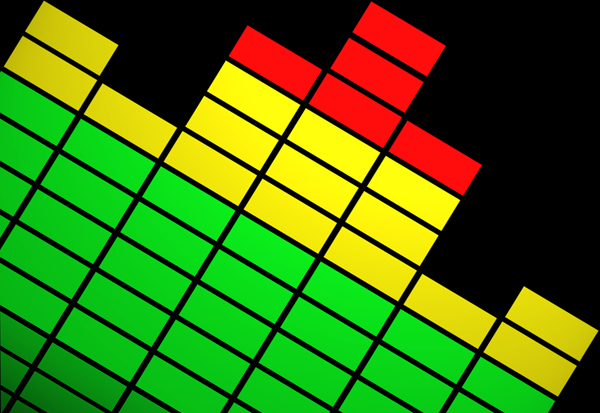4 Ways To Use Drum Loops To Write Awesome Songs


We’ve all been there. A blank page, a strong desire to write an awesome song, but – nothing. No ideas, zero inspiration. Trying to force the beginnings of something but nothing works. In a group dynamic like rehearsals, one member of the group is usually charged and ready to lead the rest out of a creative void. But, alone, staring at your computer, mic or instrument, it can be much harder to bring something to life.
This is when you most need an unexpected boost or nudge in the new direction. You may already have an idea or two bouncing around your mind but it’s missing something to bring it together. Enter the all-important drum groove. Unless you’re an experienced drummer or very well versed in using drum loops, it might not be your first thought to look to drum beats for inspiration. But, whether it’s a laid back vibe or a rock and roll pounding – the energy of a drum beat can really get your creativity flowing and bring a song idea to life.
Here are some great ways to use drum loops to write awesome songs.
Follow their lead
Unless you have a very specific idea in mind, Kick Start Your Drumming told us that using a drum loop as it is can be a great way to ignite some inspiration:
“Try to resist the temptation to alter or adjust them and just try interacting with them instinctively. The left side of your brain (the analytical, methodical side) may fight it, but if you let the right side (the creative side) out to play, you may be pleasantly surprised with what comes of it.”
One way to do it is to actually arrange and lay out the drum loops fully before trying to write a song. Again, this may seem counterintuitive, but it can be very helpful to narrow down the endless options available, especially when you are drawing blanks.
So, try to let loose and go with the flow, allowing the drum loops to take you wherever they want to. It’s a great way to simplify the decision-making process when you feel creatively stumped.
Or … edit them to your heart’s content
Alternatively, it might be time for some serious drum loop transformations to get your next song up and running. Whether you’re into Cubase, Logic, or Ableton Live, see how far you can take editing loops until you find something that pops. This is a great way to explore just how much the drum part vibe can be affected by tempo. Drum loops typically stretch up (increased tempo) more than they stretch down (decreased tempo).
Different Digital Audio Workstations (DAWs) will yield differing results, but any attempts to transform and manipulate loops can lead you down a new creative path when it comes to songwriting. So, loosen up and experiment, even push the loops as far as you can and see what happens.
Try a completely new mix
Any drum loop can sit nicely within the mix of a genre they were intended for. It’s all too easy to choose metal drums for a heavy metal mix, or some classic backbeats for a retro mix, and they’ll basically always work. They were designed to complement their intended genre effectively.
Sometimes, though, using one genre’s mix in a completely different one can create some really creatively interesting results. You might just find that the mix you come across may be the perfect one for the song you are writing, despite it being something that you never would have otherwise considered. It may lead you towards an unexpected melody.
Another option is to experiment with the processing of some loops. For example, take a natural, warm acoustic drum mix and try adding a lot of compression. You will find that the loop takes on a completely different vibe and character, one that could inspire you to write something unexpected.
Compile your own loop library
Open any drum sample library and you will usually find hundreds of drum loops of varying tempos, designed for specific genres and feels. They are typically created for intuitive navigation between styles and genres, and that’s great – but it may also be helpful for you to customize it to suit your own unique tastes and needs.
When you create your own custom drum track library, it helps you to not only get really familiar with variations of loops, but also which ones you vibe with the most. Organizing folders such as ones with simple, go-to grooves, triplet feels, swing ones etc., can aid your productivity by enabling you to head straight for a particular loop quickly when an idea starts taking shape. It’s also likely that in doing so, you will expand the scope of the drum grooves you like and come across ones that you know could aid the inspiration of a particular idea when it comes along.
Solo song writing can be particularly difficult when you’re sat in silence in front of a screen, and experimenting with drum loops can be a really effective way of breaking you out of any creative paralysis. But, even if your inspiration is flowing, playing around with the underlying groove can bring an energy to the flow of your ideas that could really bring your ideas to life and result in you writing an awesome song!
Liyana Perry writes on behalf of Sage Music School where they base lessons on the science and research of the psychology of learning. Their effective teaching methods create confident and capable students who enjoy the happiness of making music.
Photo by David Martin on Unsplash







Leave a Reply